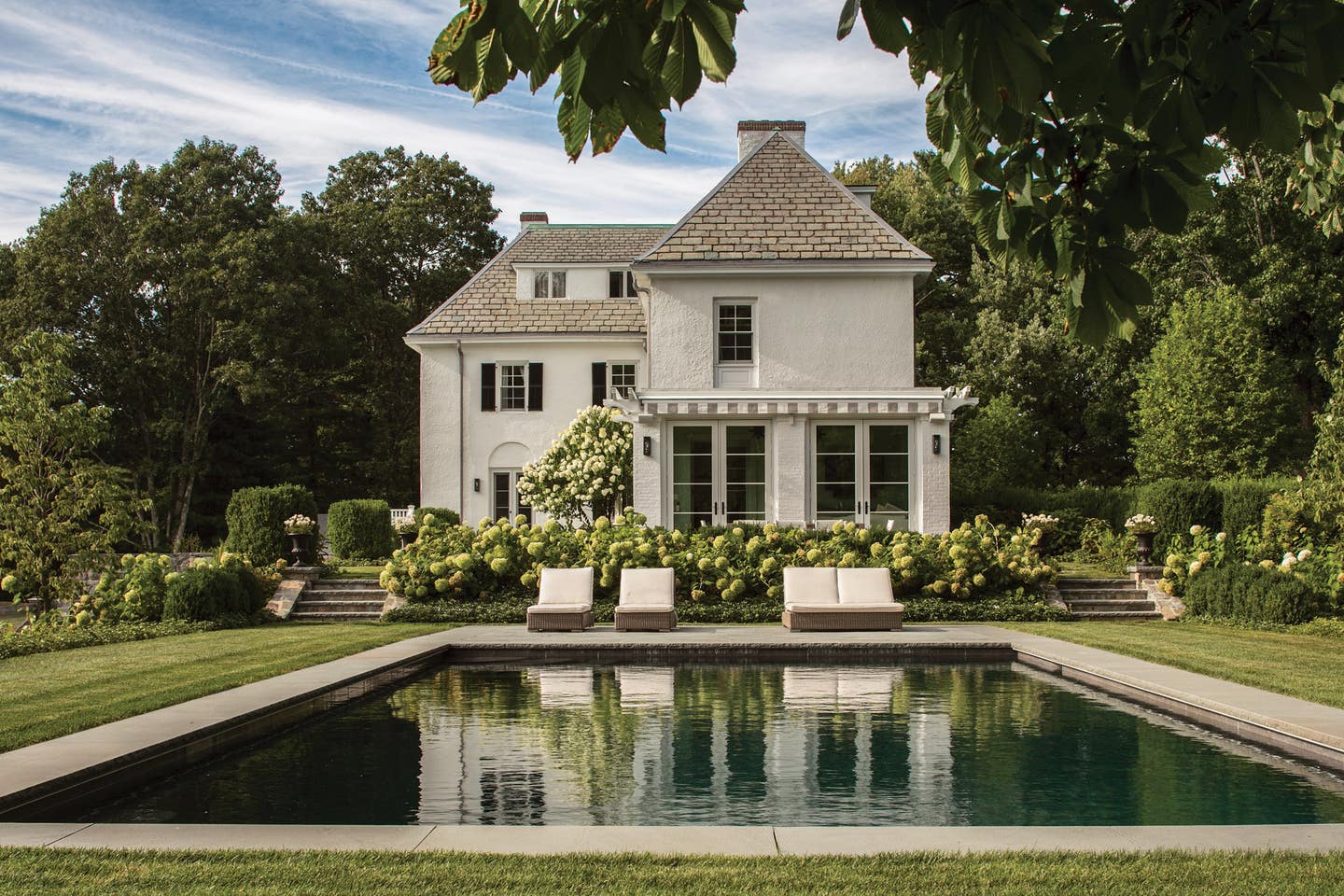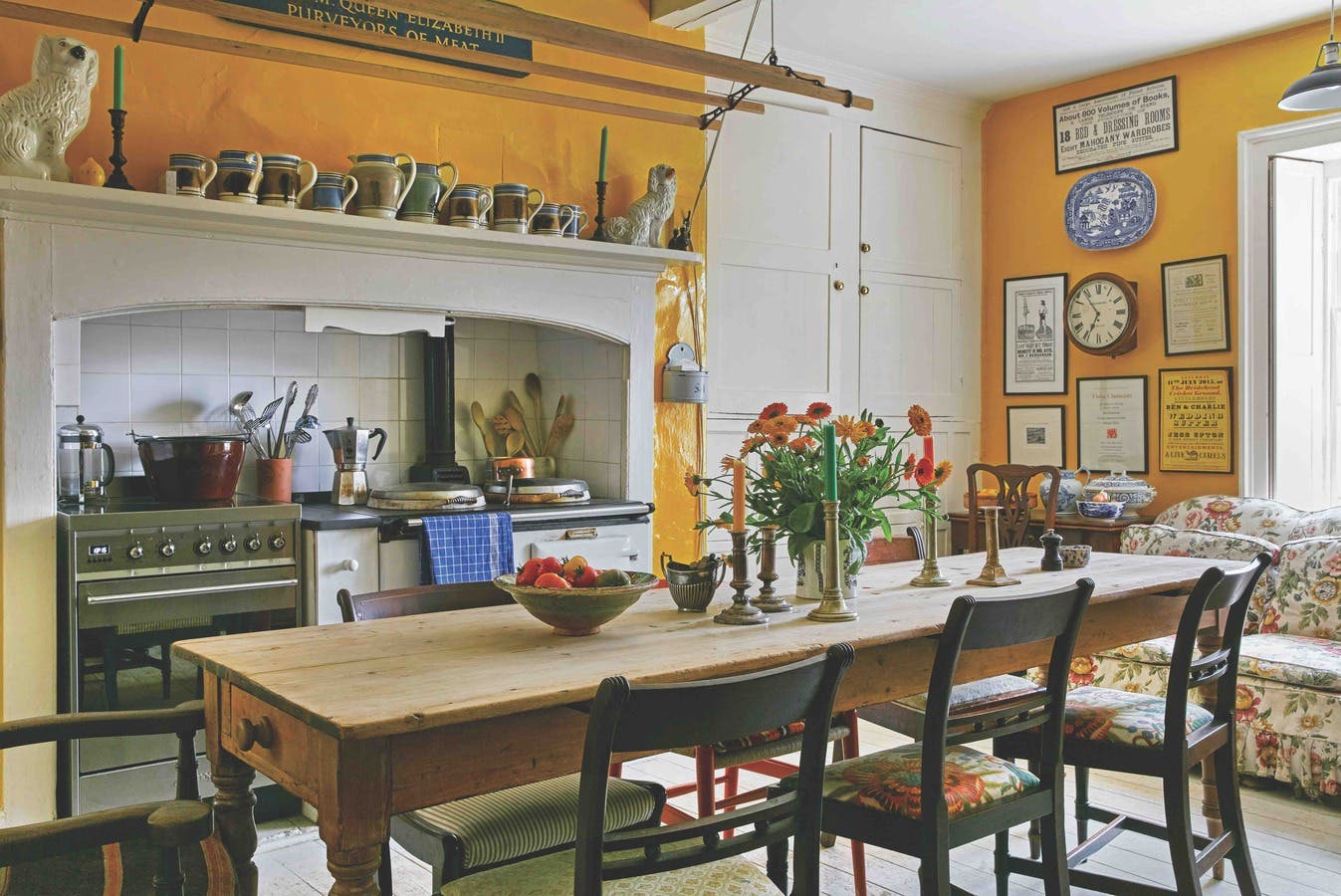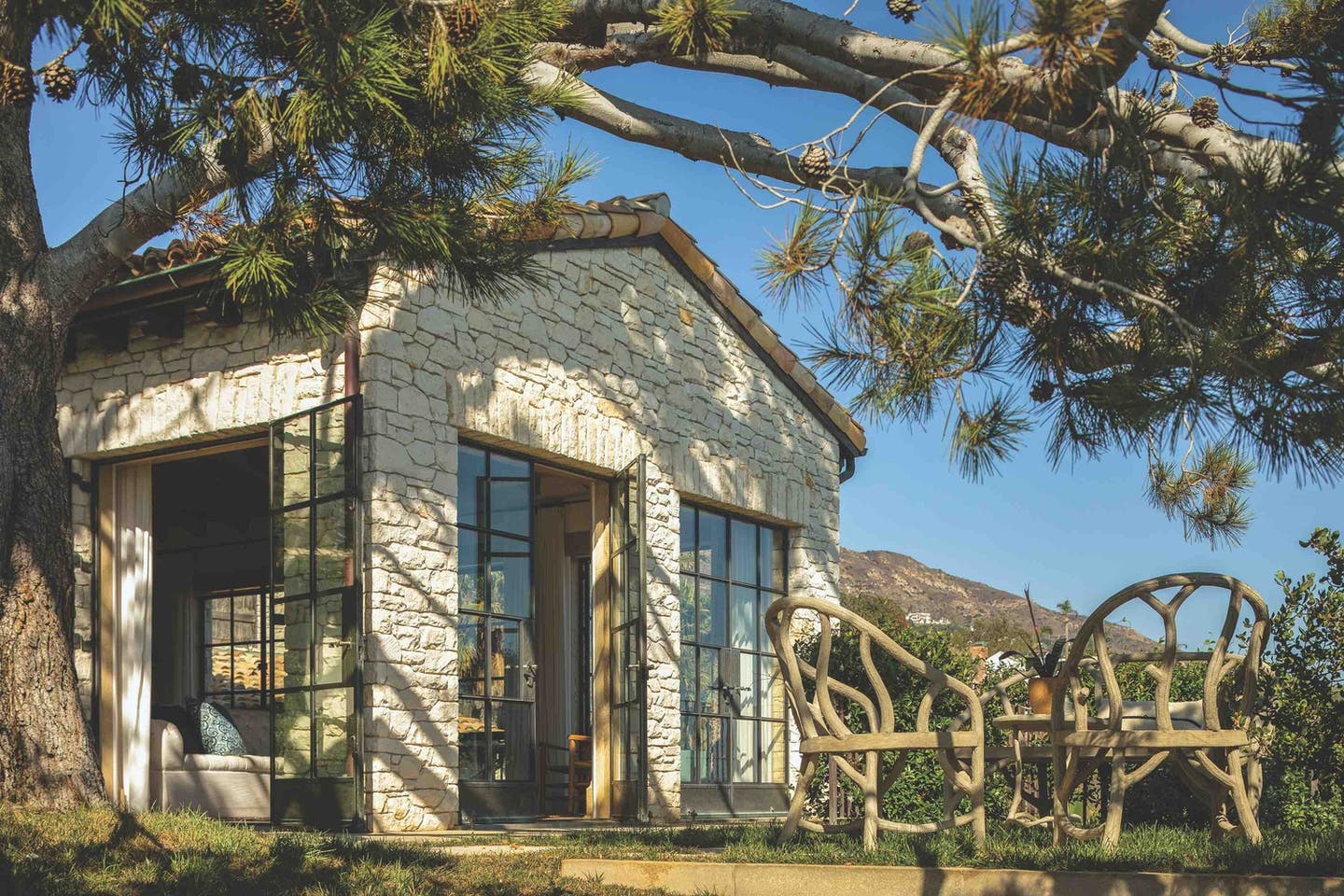
Projects
Dan Gordon Landscape Architects’ Bulfinch Award-Winning “Charles River Estate”
Project 2019 Bulfinch Award Winner “Charles River Estate”
Designer Dan Gordon Landscape Architects
The renovated circa-1900 house by the Charles River in Dover, Massachusetts, was charming, with its stucco exterior and slate-tile roof, but it wasn’t until Dan Gordon Landscape Architects of Wellesley, Massachusetts, revitalized the landscape in 2015 that the entire property truly shined.
The four acres, which feature a woodland border and the river to the east and a broad, open meadow to the west, inevitably changed over the hundred-plus years since the house was built. A pool was added, rock walls were constructed, and the trees and shrubs near the house kept growing until they pretty much cut off the sightlines between the house, pool, and meadow, making them feel disjointed from each other. “It’s a well-built, turn-of-the-century house with a sun porch on the side opening to the gardens,” says Gordon, “but the original design of the gardens had been added to over time with a series of additions of a lesser quality, which had been neglected and had become overgrown.”
Gordon and his team renovated the outdoor living spaces and redeveloped the gardens for clients who wanted their property to feel in tune with the historical nature of the house as well as fit their needs for dining, pool, and entertaining spaces. To make the landscape fit cohesively with the architecture of the house and the context of its surroundings, Gordon used classic design elements such as symmetry, balanced proportion, designing along the axis, and an emphasis on greenery. The project earned Dan Gordon Landscape Architects a Bulfinch Award for excellence in landscape architecture this year from the Institute of Classical Architecture & Art (ICAA), a nonprofit organization that promotes the importance and preservation of classical design.
“Landscape always starts with grading,” says Gordon of how he began this project by simplifying the terraces near the house. The old bow-front rock wall that hugged the back-lawn terrace was handsome and consistent with the style of the architecture, but Gordon and his team, which included landscape contractor The Picot Company of Needham, New England Woodworkers of Kingston, and Custom Quality Pools of Billerica, took out “the labyrinth of walls that weren’t really up to speed or well done,” he says. Then, they moved the pool closer to the house, rotating it 90 degrees and centering it with the lawn terrace off of the southern-facing sun porch. Now, the pool stretches out from the house perpendicularly toward the woods. With the grade changes established—one step down from the house to the dining terrace, another step to the lawn terrace with the bow-front wall, then four steps down to the pool garden—they added walls and stairs to match existing ones and installed a red cedar fence with a cross-buck motif around the pool.
For plantings, clearing out what was overgrown between the house, pool, and meadow opened up the views and made the property feel unified. Staying true to traditional New England landscapes, stretches of lawn are bordered by trimmed boxwood and perennials such as Japanese pachysandra, lady fern, and peach blossom astilbe. Pathways are made of bluestone pavers and, for illumination, the team selected Teka path lights and Hunza step lights. An expanse of Annabelle hydrangea fills the area between the two sets of stairs leading to the pool garden, while eye-catching trees such as flowering dogwood and Merrill magnolia help define focal points throughout the landscape.
The color palette was purposely kept minimal, using mostly greens and whites, so the geometry of the design is what you notice first, an important element to classical landscapes. But within the clean lines, symmetry, and balanced proportions, plants are encouraged to grow naturally and abundantly, especially around the perimeter of the property. The effect is that the planted material acts as a bridge between the architecture of the estate and the more organic pastoral setting of the landscape.
As one of the ICAA judges for this year’s Bulfinch Awards, Erik Evens of Evens Architects of Los Angeles says, “This design sets the perfect tone as a companion to the locale and the architecture. Key here is the designer’s sense of restraint. The materials and details are so well aligned with the woodland setting that the resulting spaces seem like perfect mediators between the natural and the manmade. This is one of the great promises of landscape architecture, and one that this beautiful project achieves with quiet and grace.”
Gil Schafer of G. P. Schafer Architect of New York, another judge for this year’s Bulfinch Awards, agrees with Gordon’s landscape achievements. “This elegantly planned and masterfully executed garden struck a chord with each of the jurors,” he says. “We were unanimous in our enthusiasm for Dan Gordon’s beautiful garden for this estate on the Charles River. We all loved the tailored yet understated approach to updating an old property without making it lose the soul of the original landscape—through careful detailing to match existing features and a restrained plant palette. A total delight.”
The main success and what ultimately earned the award, Gordon believes, is that the design preserved the site and harkened back to the intent of the original gardens. “You could do something that contrasted, something more contemporary,” says Gordon. “You could remove more or remove less of what was already there, but we chose to look at the context closely and work with the best parts of what we had in a way that was not only sympathetic to the original architecture but enhanced it.”
When all is said and done, the landscape is sure to grow and change over the next 100 years, just like before. But the touchstones of this design—grading, terraces, lawns, walls, and overall import of plant choices—will be the compass for how it was originally, how it’s meant to be. And that’s what is most important. The house opens to the gardens, the gardens open to the meadow, and the meadow opens to the natural world, calm and inviting in all its splendor.








